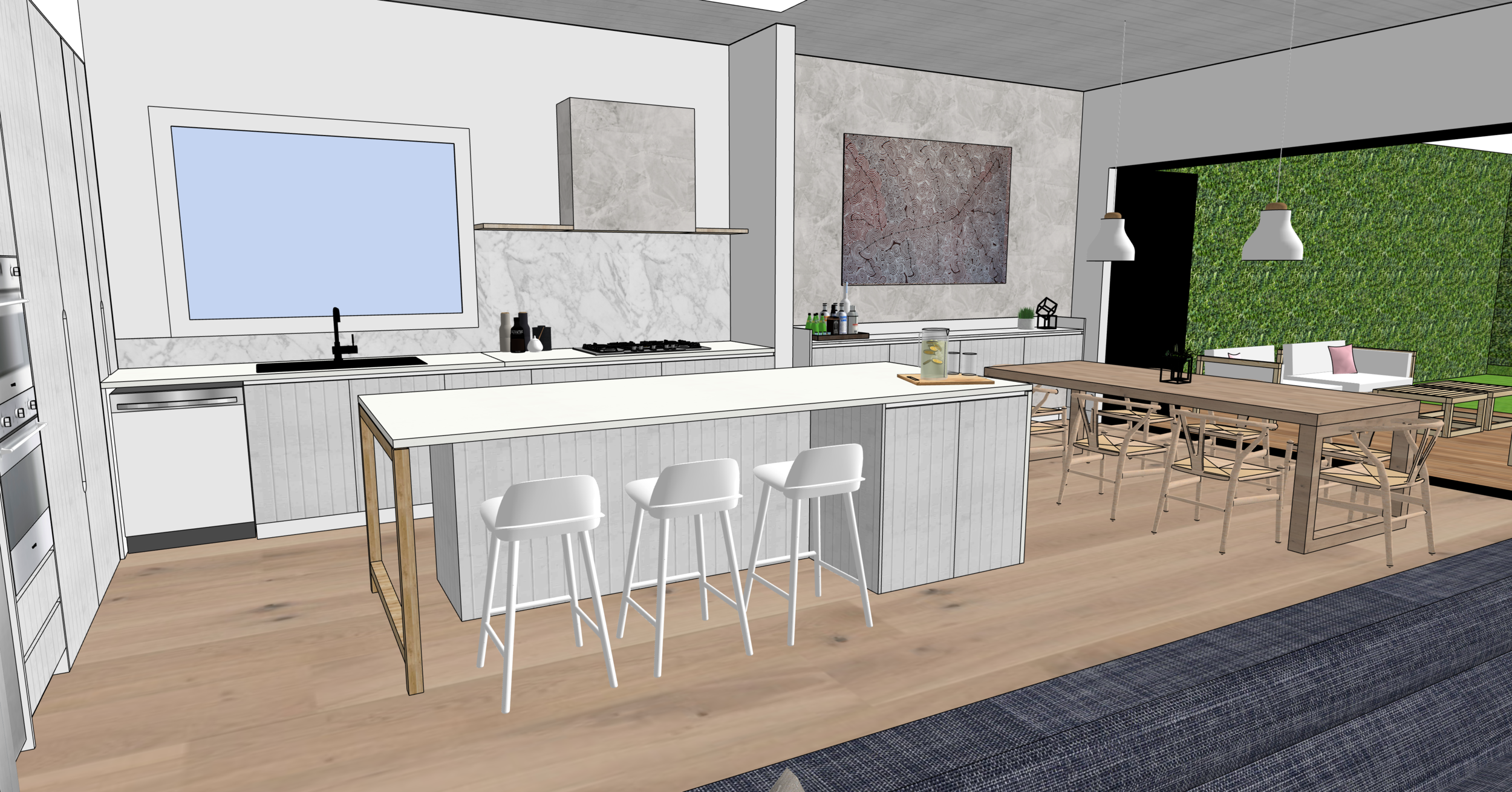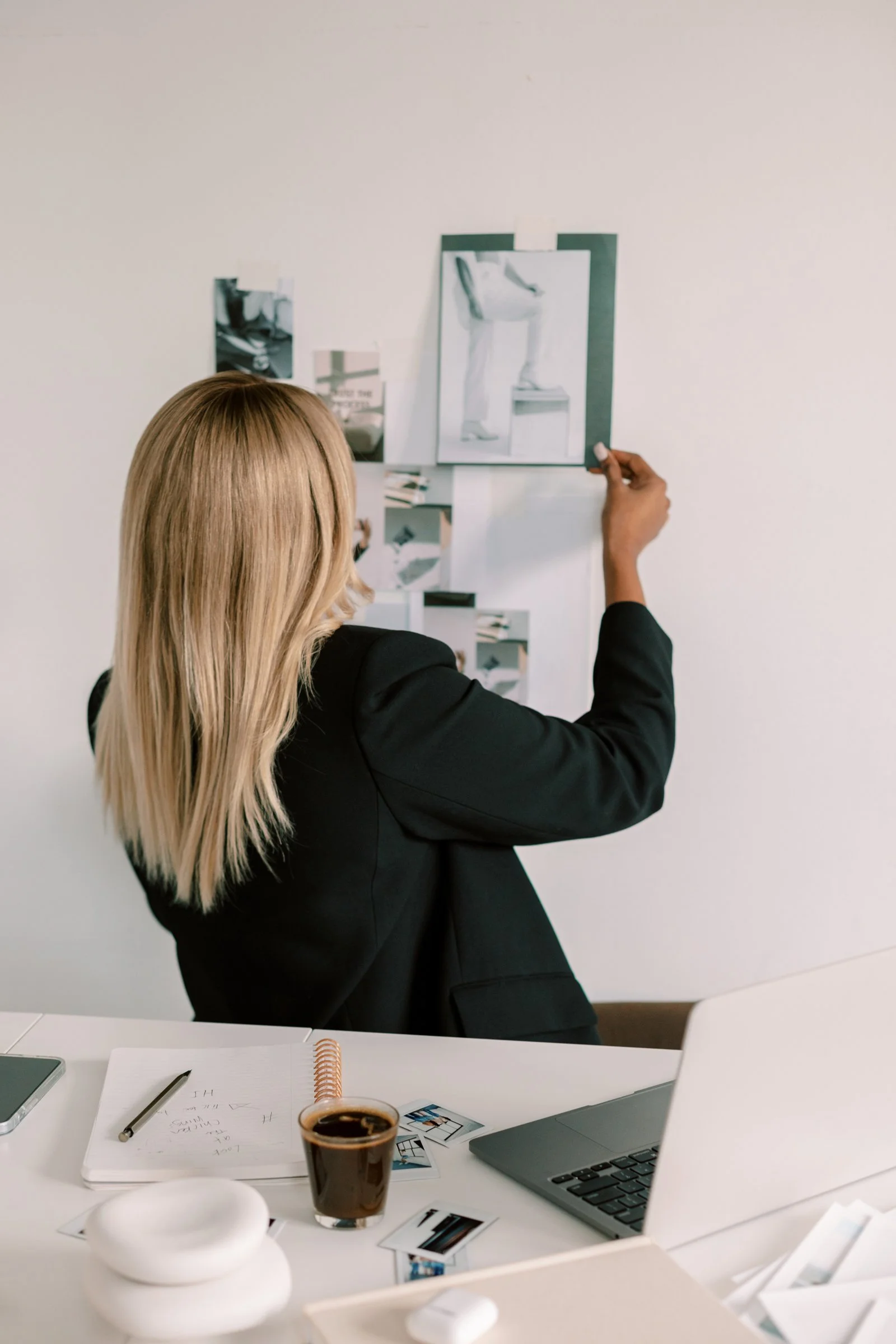Interior stylist vs decorator vs designer: what's the difference?
In the interior design industry there are a lot of different roles and titles out there and it can be hard to understand the differences between them.
A question that often comes up in my design community on Instagram is about the difference between an interior stylist, an interior decorator and an interior designer.
And as a professional in the industry it's important to understand the distinctions between the roles and what each one offers clients.
Often clients have no idea about the nuances and differences between these professions and will often ask their designer to perform work that they aren’t legally allowed to be doing (or aren’t insured to work on). So it’s important to understand the differences and know which type of service you offer.
It’s also OK to tell a client that a particular request is out of the scope of what you are trained or licensed to work on. This is not a reflection on you as a professional and they will value your leadership in helping to point them in the right direction of someone who can help them. You can then work in a collaborative way with these other professionals to achieve the results your clients are after.
So let’s look at the differences between a stylist, a decorator and an interior designer and see what each role involves.
Interior stylists
An interior stylist is a visual expert who often works on photo shoots or product campaigns to create visually appealing spaces.
They may be responsible for sourcing and selecting furniture and decor and arranging them in a way that is visually appealing and “on trend”. They may also help with styling a space for special occasions such as parties or events.
Part of the role of a stylist is to create appealing and cohesive settings that showcase products in the best possible light. They may also be responsible for sourcing and selecting props and accessories and arranging furniture and decor/accessories to create a certain look or feel.
But interior stylists can also work on styling residential and commercial spaces for clients.
They can help create a specific style or look for a space by selecting colour palettes, coordinating textiles and choosing decor and accessories that reflect the personality and lifestyle of their client. For example, they might create a beautiful and functional living space without the need for renovation or construction. Many are also able to work with what a client already has in their home and add/remove pieces to enhance the overall look and feel.
Interior decorators
An interior decorator not only focuses on aesthetics but also helps clients make practical decisions about space planning of furniture and accessories/decor.
They may work on both residential and commercial projects and their role typically includes tasks like:
Meeting with clients to understand their needs, preferences and budget
Assessing the existing space and identifying potential issues or opportunities
Developing a design concept and creating a detailed plan for the space, including layout, colour palette and materials selections
Creating mood boards and selection schedules
Sourcing and selecting furniture, decor/accessories and soft furnishings
Helping clients choose the right kind of window treatments; such as curtains/drapes, shades or blinds
Helping clients choose textiles such as bedding, throw pillows and blankets
Coordinating the installation and placement of the selected furniture, decor and accessories
Helping the client manage a project budget and timeline
Overseeing tradespeople like painters, art installers, electricians and flooring installers
Advising clients on lighting, paint colours and other design elements that will enhance the look and feel of their space
Helping clients declutter and organise their space
Staging homes for sale
Interior decorators may have a background in interior design but they generally don’t need to have formal education or licensing in order to practice.
They will, however, have strong knowledge of design principles, colour theory and the latest trends in decoration/accessories and materials. Interior decorators have a keen sense of style and can help clients to create a space that is both beautiful and functional.
Interior decorators may have some knowledge of joinery/millwork design but it is not typically their main focus.
Good to know: Joinery/millwork design refers to the design and construction of custom woodwork such as cabinetry, built-in furniture and architectural details like wainscoting. It involves a high level of technical skill and knowledge of carpentry techniques as well as the ability to create detailed drawings and specifications.
Generally interior decorators focus more on the aesthetic aspects of a space but they may work with a joiner/millwork designer to specify the style, finish and hardware for custom cabinetry. However, typically an interior decorator would not be responsible for the design and construction of the joinery/millwork itself.
Interior designers
Interior designers are responsible for creating functional, safe and aesthetically pleasing spaces and have additional responsibilities such as knowledge of building codes and safety regulations, space planning, design oversight, technical drawings and material and product specification.
Interior designers are generally the most qualified of the three professions and often (but not always) have formal education and training in interior design or a related field. They may be required to be licensed or certified in order to practice (this requirement differs around the world).
Interior designers may work on a wide range of projects, including residential, commercial and hospitality spaces.
Their role can include many of the same tasks as an interior decorator, such as meeting with clients, assessing the existing space, developing a design concept and sourcing and selecting furniture and accessories/decor.
However, interior designers also have additional responsibilities, such as:
Knowledge of building codes and safety regulations: Interior designers must be familiar with the laws and regulations that govern the construction and renovation/remodelling of buildings to ensure that their designs comply with these codes.
Space planning: Interior designers are responsible for creating functional and efficient layouts for a space. They use specialised software (e.g. AutoCAD, SketchUp, Revit etc.) to create detailed floor plans and elevations and may also work with architects and builders to ensure that their designs are structurally sound and feasible.
Design oversight: Interior designers often act as the main point of contact for clients from initial concept to final installation. They will coordinate with contractors/builders and tradespeople to ensure that the design intent for the project is maintained.
Technical drawings: Interior designers create technical drawings such as floor plans, elevations and details that are used by builders and contractors to execute the design. They will normally use software to create these drawings and they must be able to communicate clearly with builders and contractors to ensure that the design is executed correctly.
Material and product specification: Interior designers have knowledge of various materials and products that are available in the market and use this knowledge to specify the right materials and products for a project that are appropriate for the style, budget and durability (e.g. selecting appropriate finishes in commercial spaces etc.)
So interior designers and interior decorators both work to create beautiful and functional spaces, but interior designers normally have more formal education and/or more experience working on complex projects. Interior designers will need specific knowledge of building codes, safety regulations, space planning, project management, technical drawings and material and product specification.
In some parts of the world interior designers may also be required by law to be licensed or certified in order to practice or use the title of “interior designer”.
[See my blog post here for more information on this]
Overall, as a professional in the design community, it's important to understand the distinctions between a stylist, decorator and interior designer and what each role offers clients.
Don’t forget that as a design professional we are often working on our clients’ biggest financial asset - their home. This is not a responsibility that should be taken lightly.
It’s our responsibility to understand where the start and end of our responsibilities lie and to take a leadership role with our clients so that we aren’t being requested to do work that is beyond the scope of what we are trained, insured or licensed to do.
If a request from a client is out of the scope of what you should be doing then don’t risk the potential liability of taking on this work yourself, just to avoid upsetting your clients. Instead, educate them on the different roles in the industry and point them in the direction of the appropriate professional who can take on this work safely and legally.
Thanks for reading and catch you in my next post!
Clare x
Dr Clare Le Roy
Want to learn SketchUp?
Get started with my free information session
If you want improve your work with design clients or you are about to start renovating or remodeling then you will love SketchUp.
With this software you can mock up an entire home in 2D (floor plans, joinery/millwork elevations, lighting and electrical plans and more) and 3D (renderings and perspective drawings) so you can picture exactly what it will look like when it is finished plus prepare your technical drawings for use with your clients, trades and contractors.
Learning SketchUp will save you time, money, mistakes and so much more! It is a well known piece of software in the interior design and architecture industries and will give you a solid technical drawing skill that will immediately upgrade the professionalism of the work you are doing.
I teach an online course for beginners that is focused specifically on using SketchUp for interior design purposes. We have had more than 10,000 students come through the course with so many fantastic projects designed and built!
We have all sorts of students in the course including designers and architects, cabinet makers, home renovators/remodelers, kitchen and bathroom designers, event planners, landscape designers and design enthusiasts.
To find out more about the courses we have on offer click the link below. And reach out if you have any questions I can help with :)








